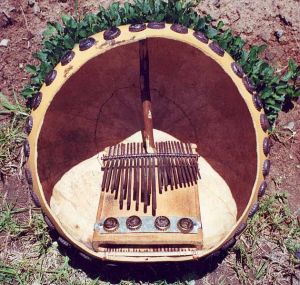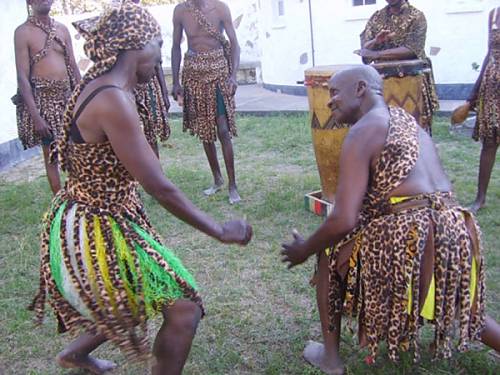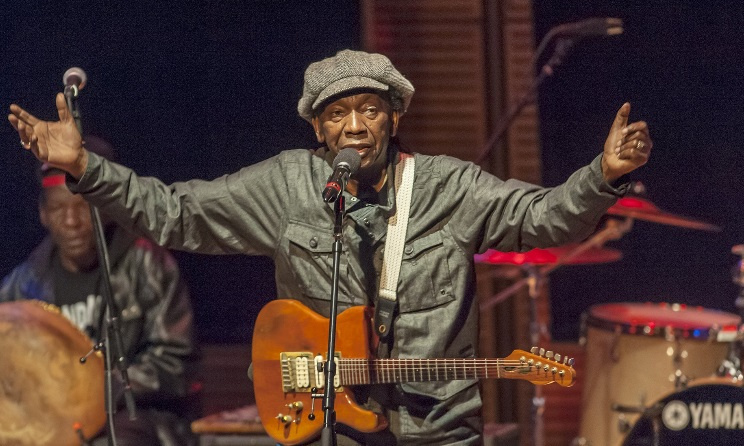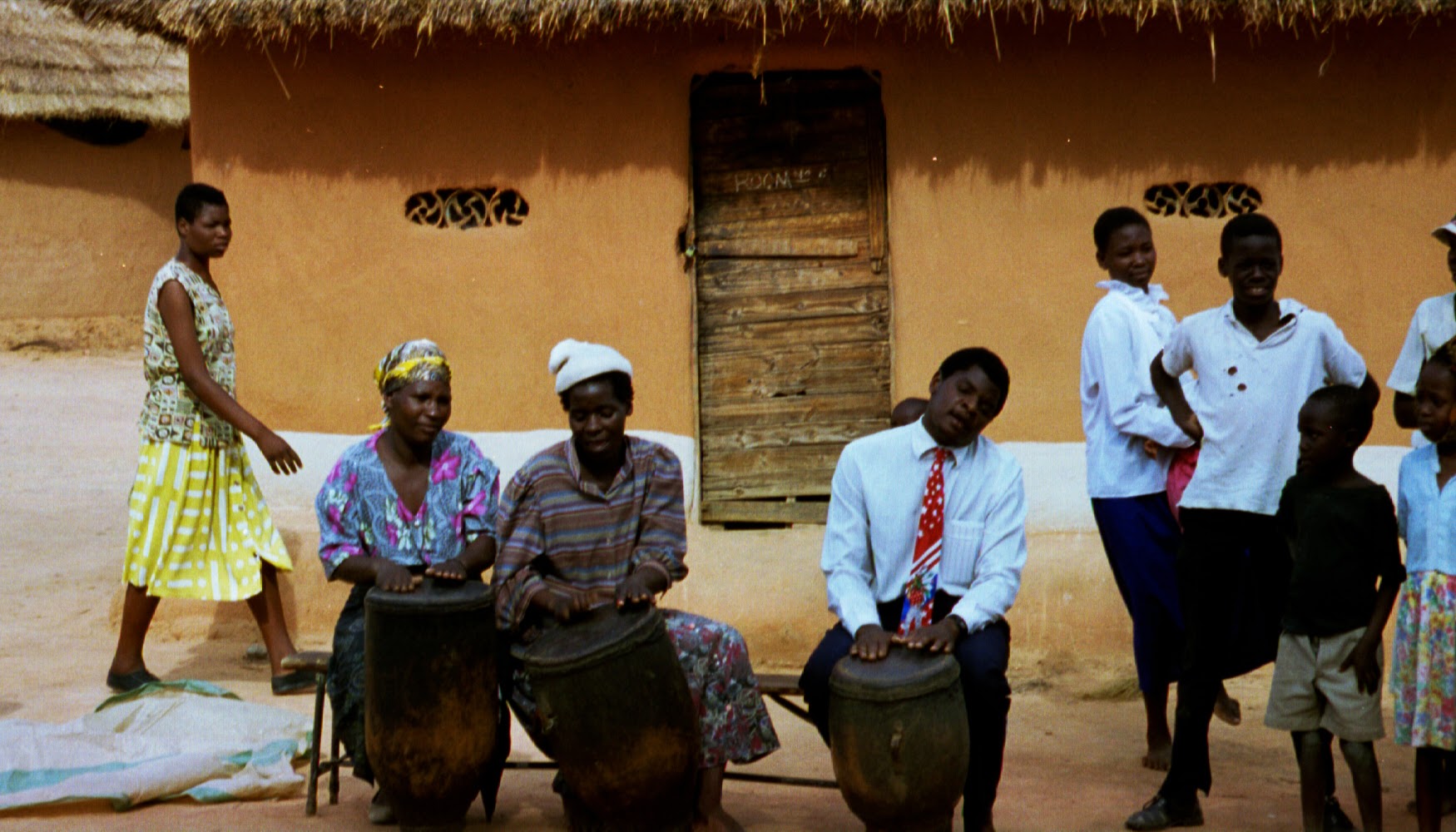Zimbabwe shares many musical traditions with its neighbors. Percussion and rhythms are at the heart of it all, helping to create a musical language vital to their culture. Music plays an important role in ceremonies, in their religion and spirituality, and later on as a catalyst in gaining their independence. A number of genres developed in Zimbabwe and changed over time as they came into contact with Europeans.
Zimbabwe has quite a few musical genres that stemmed from traditional styles. One that got its start during colonial times is a type of vocal music called imbubwe. It’s characterized by male singers singing in an a cappella fashion. Miners working in the caves created this style as a way of passing the time and took advantage of the acoustics of the cave.
Other styles that developed in Zimbabwe, many of them after they gained their independence, include sungura (a style that became popular in the 1980s and 1990s), Afro-jazz (a Zimbabwean version of jazz that mixes American jazz, blues, ragtime, and African styles like kwela and marabi), rumba (related to soukous music from the DRC), Zimdancehall (related to and influenced by Jamaican dancehall), jit (general term for any pop music that uses electric guitars), and chimurenga (a style that transcribed traditional mbira music for modern electronic instruments and was used as a political and social commentary).
 |
| Mbira set inside a calabash resonator |
Like Zambia, the mbira is an important instrument in Zimbabwean music. This thumb piano is made of wood with metal keys fixed to it. There’s a hole in the corner to hold it, and there are usually rattles attached to it as well. The designs can vary from what materials are used for the rattles, and the number of keys that are included. Sometimes, they are placed inside hollowed out calabashes to be used as a resonator (to make it louder). Years ago, I found a place online that makes handcrafted mbiras, and I bought one. I still play it to relax. Drums are also important to their music, and they utilize a number of different kinds of drums of different sizes, materials, and shapes. Other types of percussion instruments like wooden marimbas are also popular. Today, modern instruments are used in their music.
 |
| Jerusarema dance |
Likewise, dance is also integral to Zimbabwean culture. It’s tied to spirituality and life events and ceremonies. Dances often vary from region to region and generally serve a purpose; sometimes it’s to tell a story or their history or used as a means of courting rituals. Polyrhythms are often the basis of traditional music, and these dances often incorporate these complex rhythms into their dance steps. The Jerusarema dance is one of their oldest dances and was once outlawed by Christian missionaries because of what they deemed “provocative” dance movements.
I was able to find several bands on Spotify. The first one is a sungura band called The Sungura Boys. I really liked their sound; you can definitely hear the polyrhythms that create a driving feel to the music. The higher pitched guitars with the bass along with harmonized vocals give it a complex sound.
:format(jpeg):mode_rgb():quality(90)/discogs-images/A-918569-1458470085-7089.jpeg.jpg) |
| Dumisani Maraire |
Since mbira music is a staple of Zimbabwean music, I found a few mbira musicians who I listened to as well. The first one was Ephat Mujuru. Not only could you hear the mbira (and maybe more than one at times perhaps), but there were also rattles, percussion, maybe a marimba, clapping, and singing. I also found a few songs by Dumisani Maraire. He’s considered one of the greatest mbira players and spent his life performing on mbiras and marimbas and teaching people about Zimbabwean music and culture. Stella Chiweshe is a well-known female mbira player, who learned the instrument at a time when female players were pretty rare.
The Bhundu Boys are a band that mixes chimurenga and jit music with rock, pop, country, and other musical influences. Even when they’re covering American classics like Johnny Cash’s “Ring of Fire,” they never stray far away from their African polyrhythms that are so ingrained in their music.
 |
| Vusa Mkhaya |
In the Ndebele-majority region, Bulawayo music is popular. One musician I listened to is Vusa Mkhaya, who specializes in imbube music. He uses this vocal-heavy genre and incorporates it into his music. I thought it was nice to listen to. He’s won several awards in the world music category.
 |
| Thomas Mapfumo |
Thomas Mapfumo, known as The Lion of Zimbabwe, is a famous chimurenga musician. He’s particularly known for his opposition and criticism of Robert Mugabe. What’s amazing is that he’s been performing for nearly 60 years! His voice is recognizable for many Zimbabweans.
 |
| Killer T |
Killer T is one Zimdancehall musician who I listened to. I’m a fan of dancehall, so I really liked this. Sometimes it’s good to have some upbeat music in your arsenal.
 |
| Leonard Mapfumo |
One modern genre that stemmed out of American and European hip-hop is called urban grooves. I listened to a couple musicians in this genre. The first one was Leonard Mapfumo. Although it was heavily influenced by hip-hop, he uses quite a bit of vocal harmony accompaniment that keeps ties to their own Zimbabwean styles. Maskiri is the other one I checked out. Some have called him the African version of Eminem. I liked his style, but I’m not sure I would necessarily compare him to Eminem. Perhaps lyrically, but I don’t know Shona, so the comparison is lost on me.
Up next: the food


:format(jpeg):mode_rgb():quality(90)/discogs-images/R-5316949-1390386738-1417.jpeg.jpg)
:format(jpeg):mode_rgb():quality(90)/discogs-images/R-8614249-1587747905-9849.jpeg.jpg)
No comments:
Post a Comment